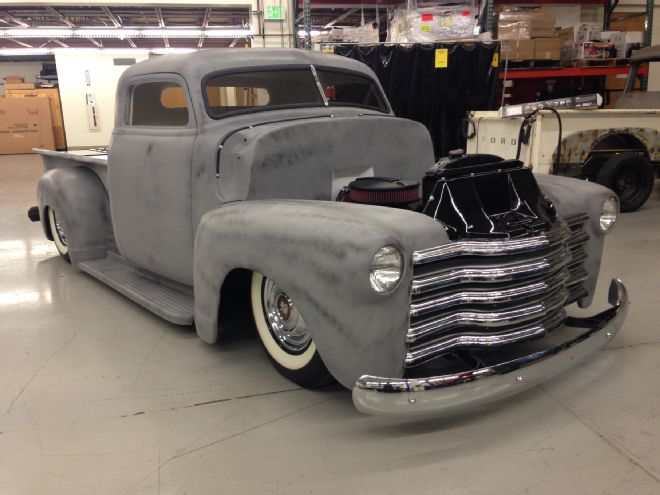
Installing glass in a chopped truck can be a tricky proposition and one where there only lies a few options: either cut down the stock glass, purchase a set of new glass and cut that down, or get a glass shop to custom cut a set to fit the openings. Usually, the stock glass is too far gone to be reused and the labor involved in cutting it down not worth the result. Cutting down an aftermarket set to fit is a realistic option, but limited to one's personal skill level when it comes to glazier skills as well as the quality of glass that's available. Oftentimes, entrusting your truck to the local glass guy was the best option out there. Now, there's an even better option with results that speak for themselves. As a certified D.O.T. 1027 Glazier, AM Hot Rod Glass can custom make acrylic and polycarbonate windows to fit any year, make, and model, including those custom jobs where a stock, replacement window just won't work. For a custom truck like our Tech Center Manager Jason Scudellari's chopped '49 Chevy, AM Hot Rod Glass is the perfect option.
A member of the plastics family, acrylic is two-thirds lighter than glass and has a greater ability to bend and flex. This makes fitment in the radius or corners of a cab frame easier and cleaner than its glass counterpart, which does not have the same movement characteristics. While cutting an acrylic sheet can be accomplished in a number of ways, be it scoring and snapping or by simply cutting with a hacksaw or bandsaw, care must be exercised to ensure a smooth cut, free of chipping from a welded or damaged blade. This makes designing custom shapes, such as the '49's rear window, a piece of cake.
Acrylic is also stronger than typical auto glass, with a higher impact rating than its silicate counterpart, so it cracks instead of shatters. It is also more durable than tempered glass and polycarbonate is impact resistant, but since it is a moisture based material, it is susceptible to scratching more than a tempered piece of glass. AMHRG resolves this issue by applying a special UV Stable/Scratch Resistant coating to scratch-prone surfaces such as a truck's windshield (windshield wipers will run just like standard glass applications) or side glass (which is perfect for non-stationary windows). Trucks that feature a wrap-around windshield can suffer from distorted optics in the corners, where the windshield wraps around the corners of the cab; something that an acrylic or polycarbonate windshield by AM Hot Rod Glass doesn't suffer from, as they're 100-percent optically clear. AM Hot Rod Glass also guarantees their acrylic products for 10 years against any hazing or discoloring when properly maintained. All their products feature built-in UV stabilizing features and are available in a myriad of tint options to protect both the occupants and the upholstery. With DOT approval, if required, available based on each individual application, not only is it convenient, but it's safe as well.
So if you're gearing up to glaze that chopped custom or you like the added benefits and features that custom acrylic or polycarbonate windshield have to offer, check out AM Hot Rod Glass for a truly 21st century approach to traditional glazing.
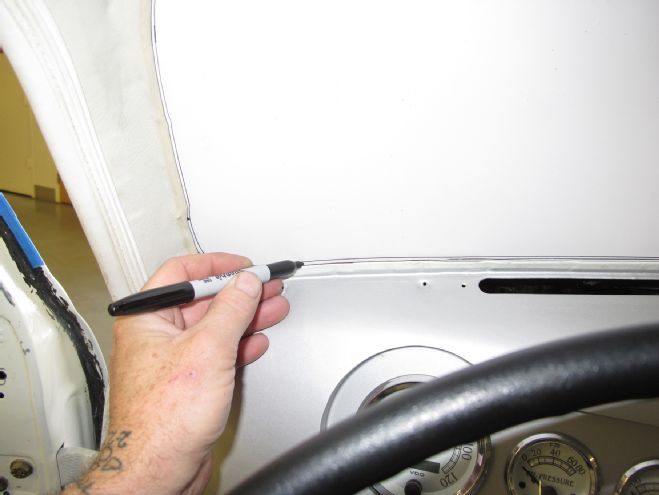
The first step in fabricating custom windows, be it traditional glass or acrylic, is to make templates of every window opening. Here, Jason starts with the windshield, tracing the shape of the opening onto ¼-inch foam core board. The final AMHRG acrylic window will be the same diameter.
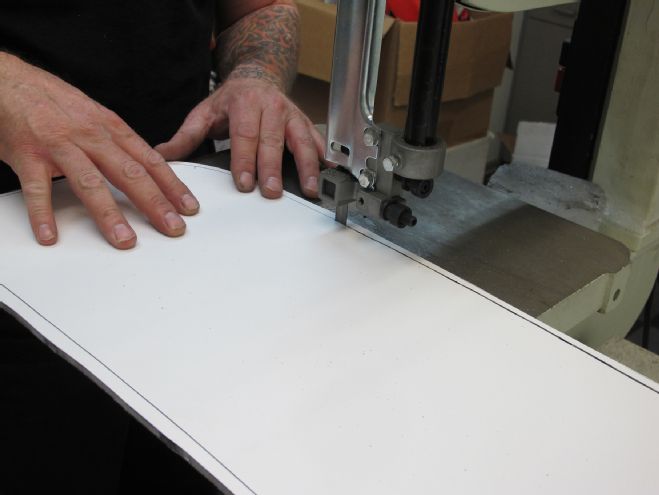
With the shape of the opening traced, Jason cuts the template to shape on a bandsaw.
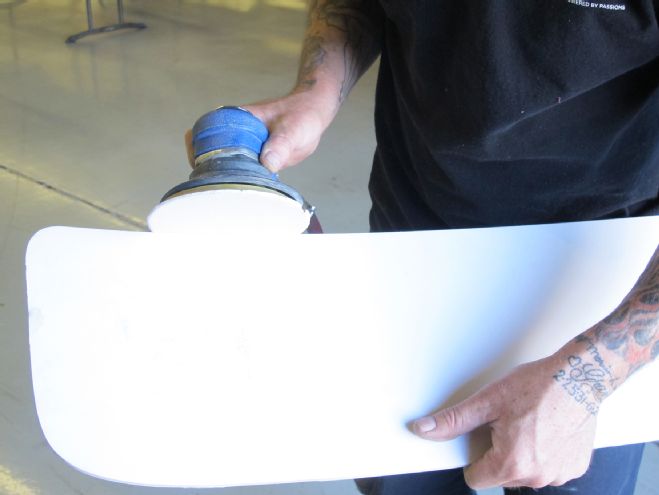
The shape is then fine-tuned using a DA sander.
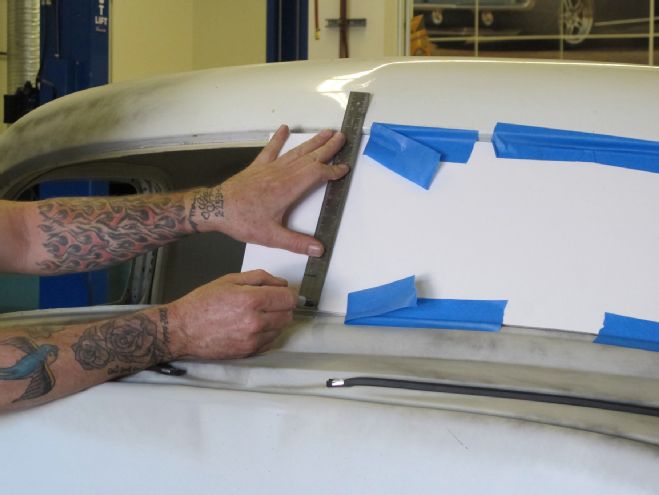
Once the template fits the opening, Jason marks the center using the peak on the cab's roof as a guide. This is where the two windshield sheets will meet, so a precision fit is key.
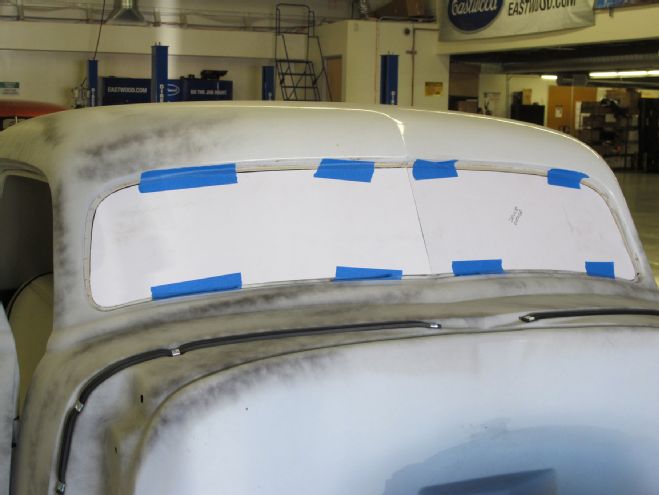
Here, both templates are in place and the windshield is ready to go, save one more step…
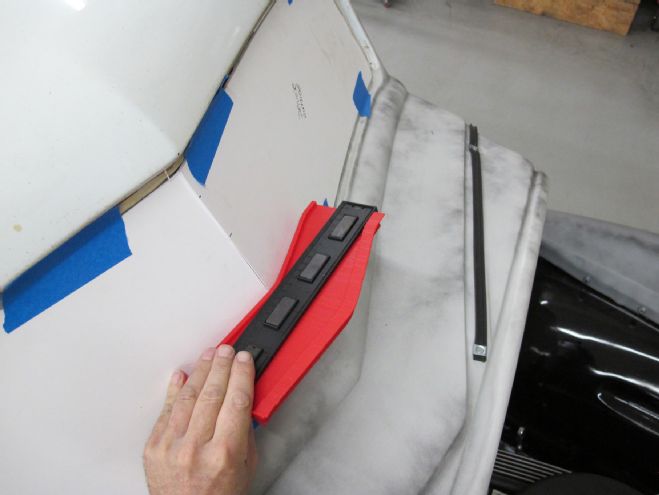
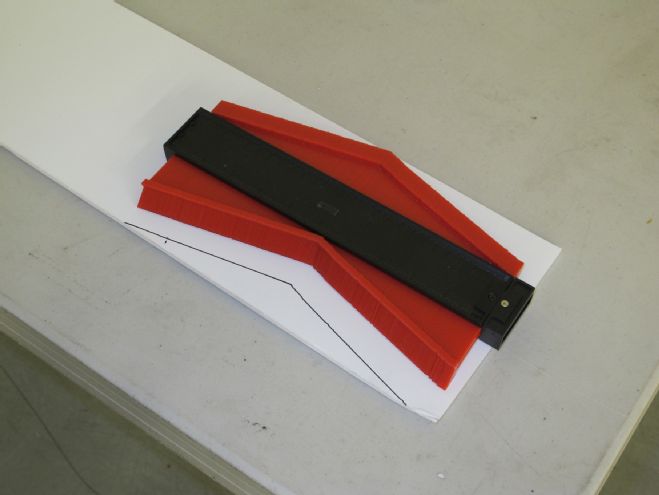
The front windshield uses a stainless steel trim piece and rubber gasket to cover the gap between the two glass sheets. To ensure a nice fit, Jason will be installing a bevel on either side of the centerline. An angle finder makes easy work of finding the proper bevel angle.
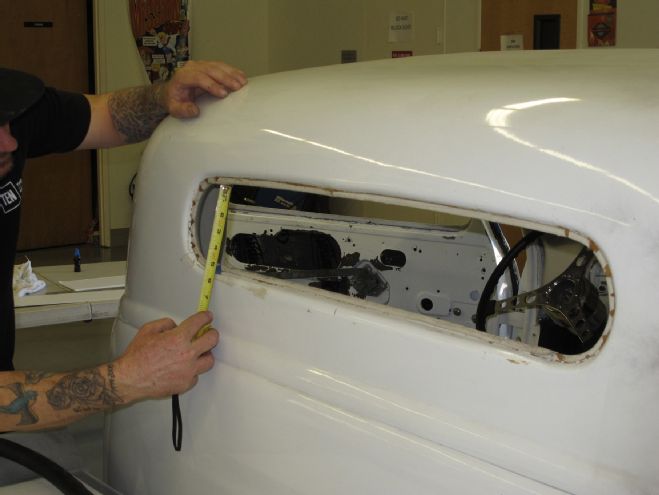
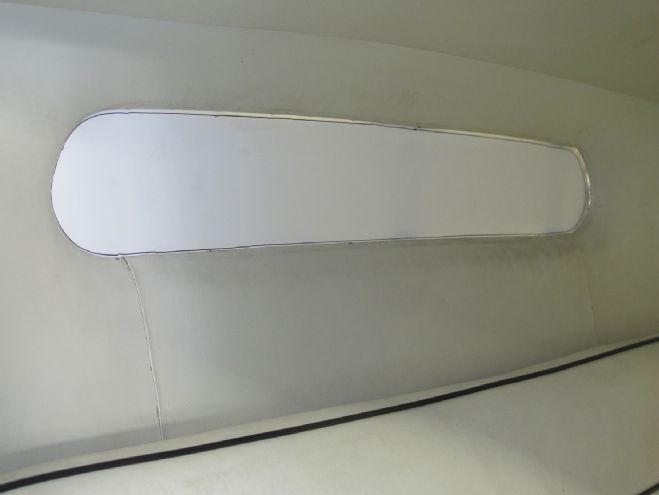
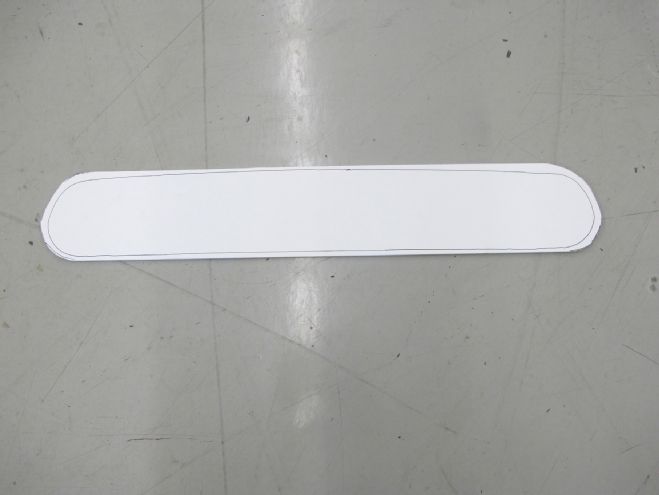
The rear window template is made in the same fashion.
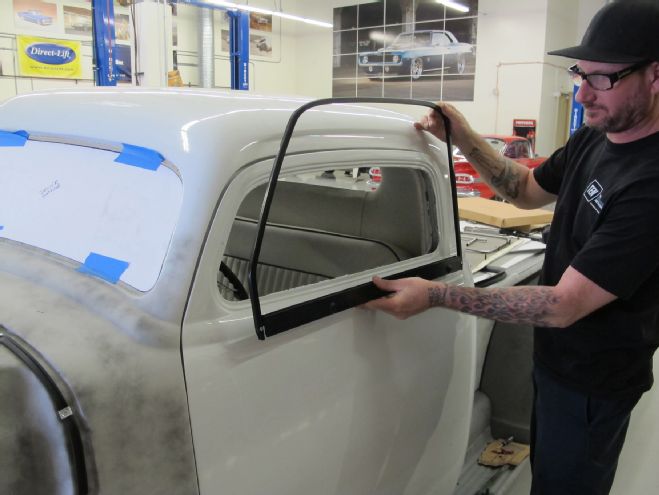
Jason took 4 inches out of the top when he originally chopped it. Since then, he lost all the door hardware, including the window frames. He'll be using LMC replacement parts throughout, modified to fit the much smaller side glass opening.
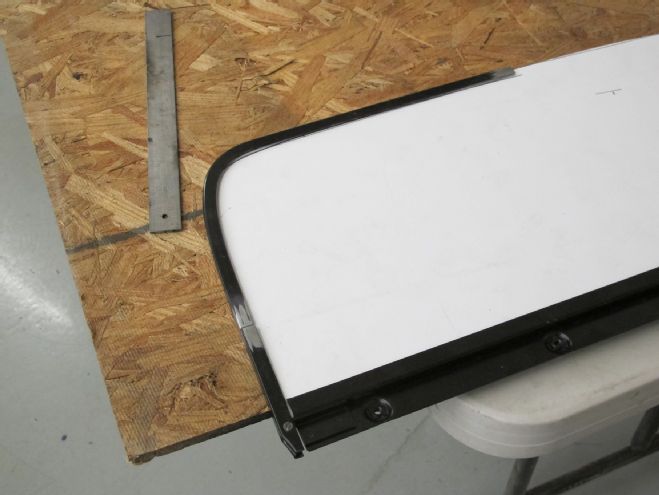
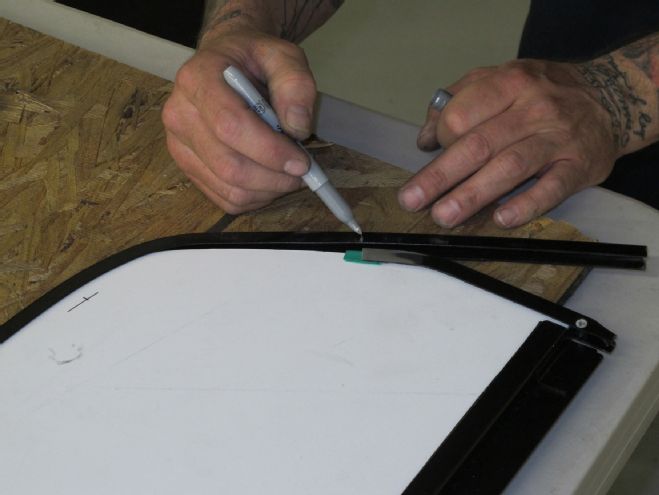
Before chopping the stock frames, Jason used them to make his side glass templates sans the extra 4 inches in the middle. This will help provide the shape of the new glass frames. A double duty template, so to speak.
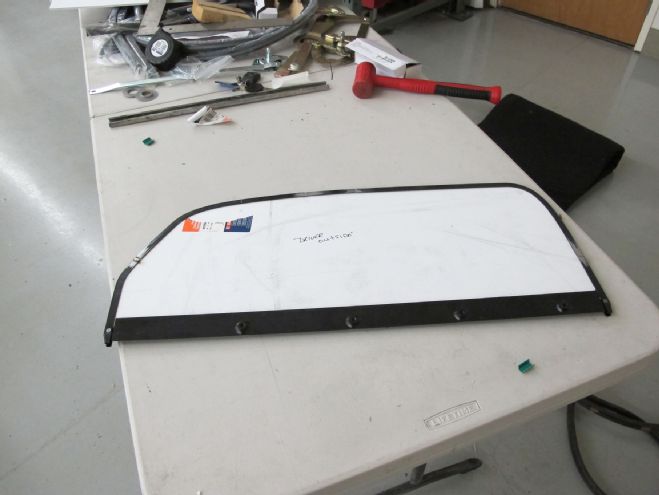
Here's the chopped side glass frame, chopped to fit the new opening.
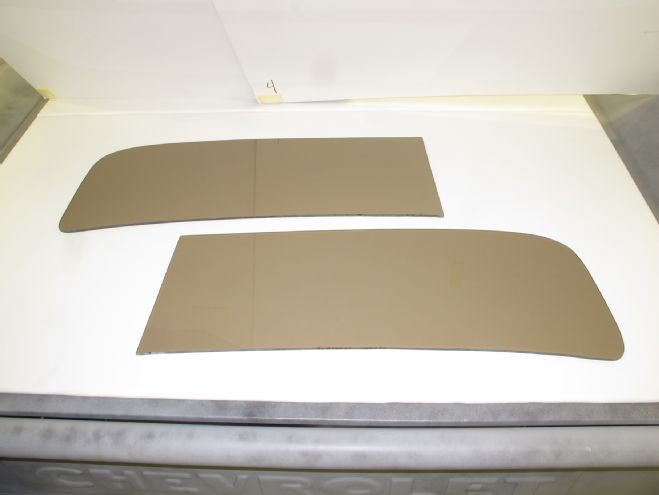
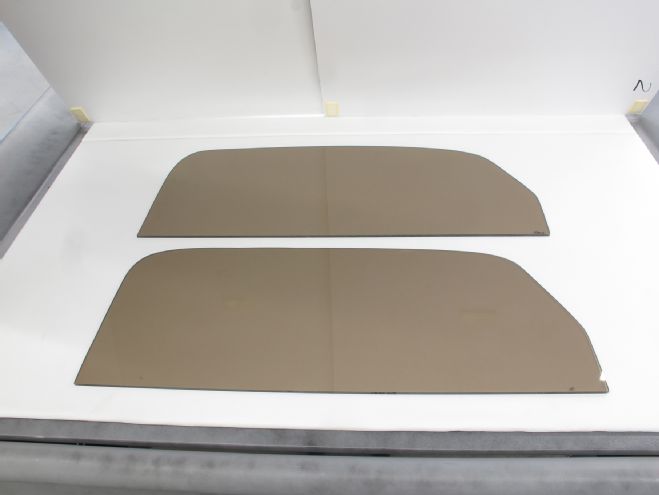
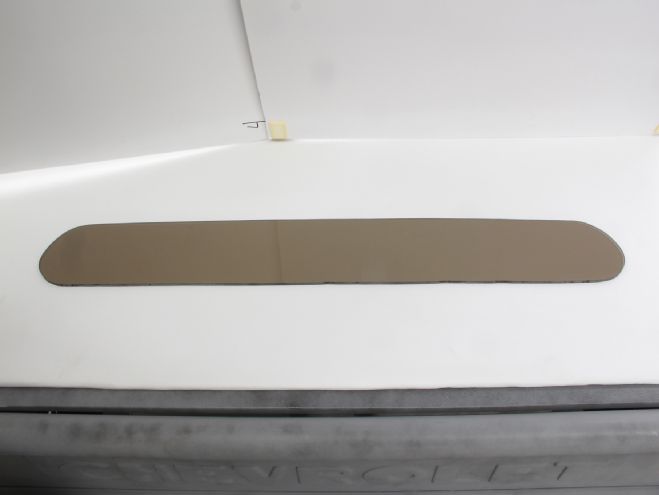
Once the templates were complete, Jason sent them out to the folks at AM Hot Rod Glass where they proceeded to cut us five perfectly-sized AMHRG acrylic windows, supplied with a scratch-resistant coating with a medium tint pigment that is actually added to the manufacturing process of the acrylic or polycarbonate to help reduce UV intrusion, glare, and to give Jason's Chevy a unique look.
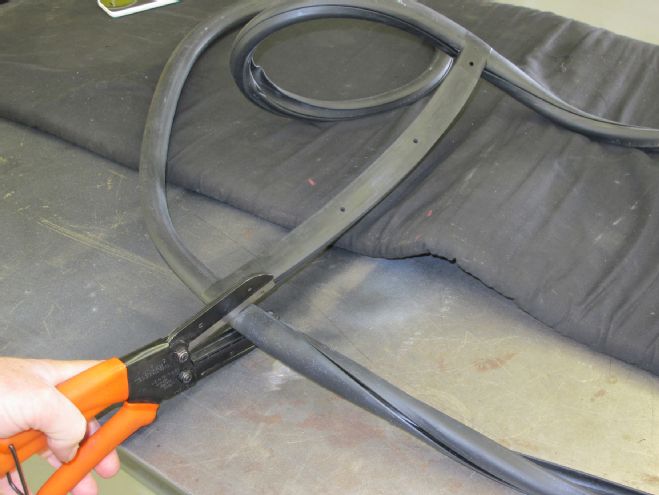
Jason will be using a stock windshield rubber gasket from LMC Truck to install the acrylic panes, modified to fit the smaller openings.
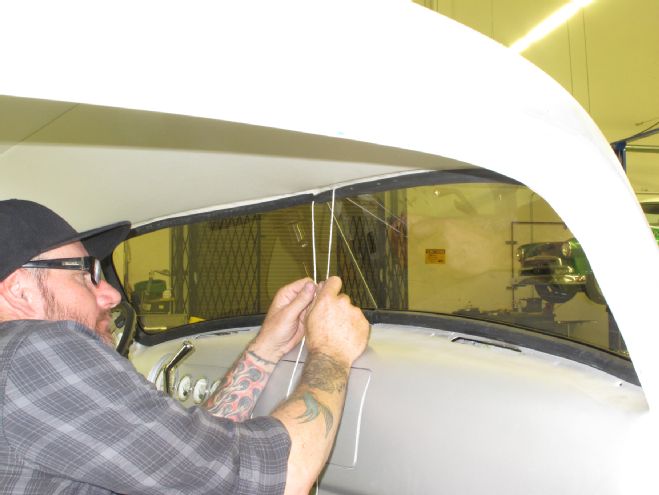
The traditional rope trick is used to get the gasket and windshield to seat in the cab's opening…
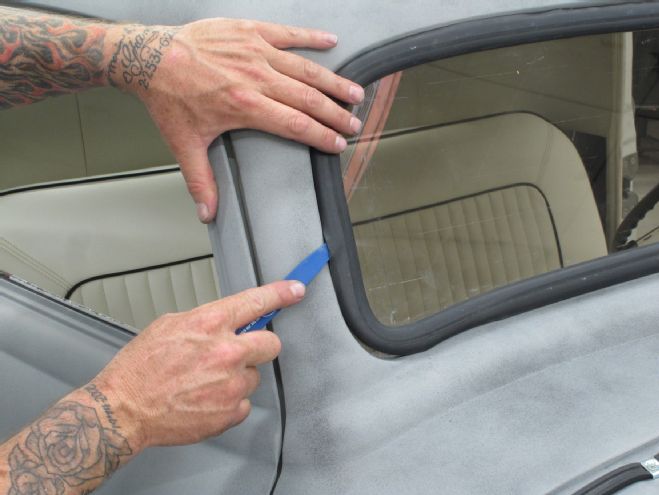
…while a nylon glass tool is used to get the gasket to seat perfectly.
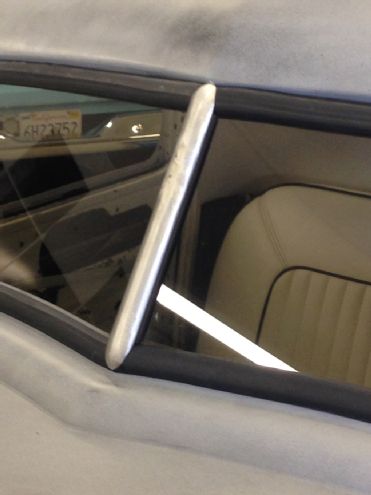
Jason trimmed a new stock center divider bar from LMC Truck before fitting a flat gasket on either side of the AMHRG acrylic glass followed by the inner trim piece to retain a stock-type look.
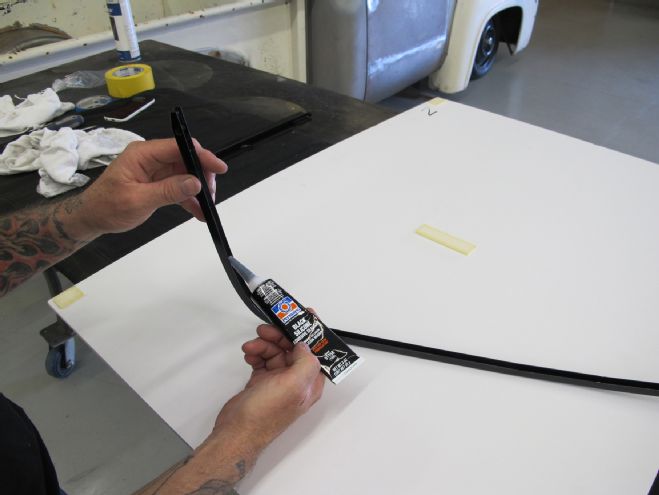
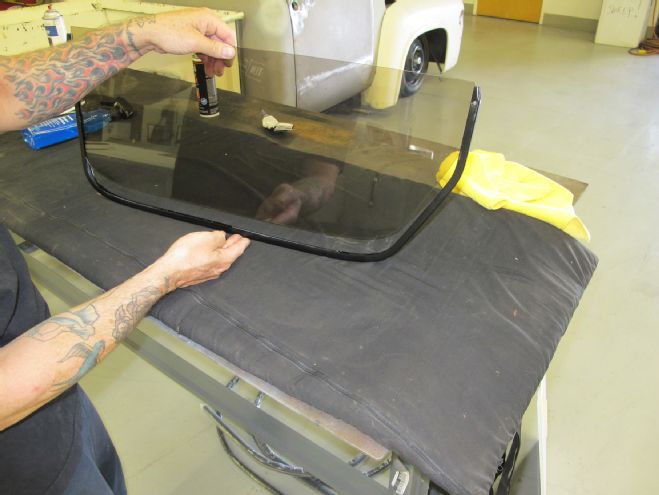
On to the AMHRG side glass, first the acrylic windows need to be installed in the new LMC Truck window frames. A bit of black RTV silicone ensures a solid fit.
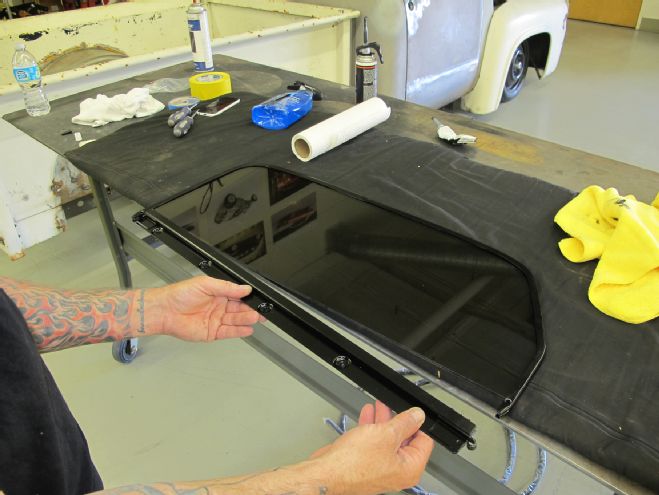
Next, the window lift channel is installed.
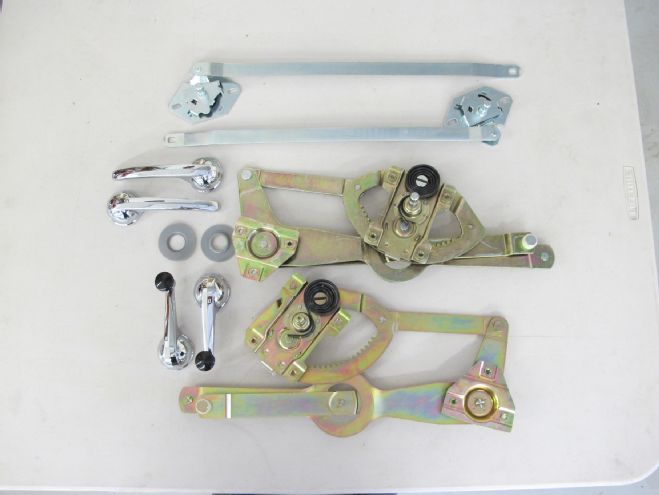
Before the AMHRG side glass can be installed, the new glass run channel needs to be installed on the door frame.
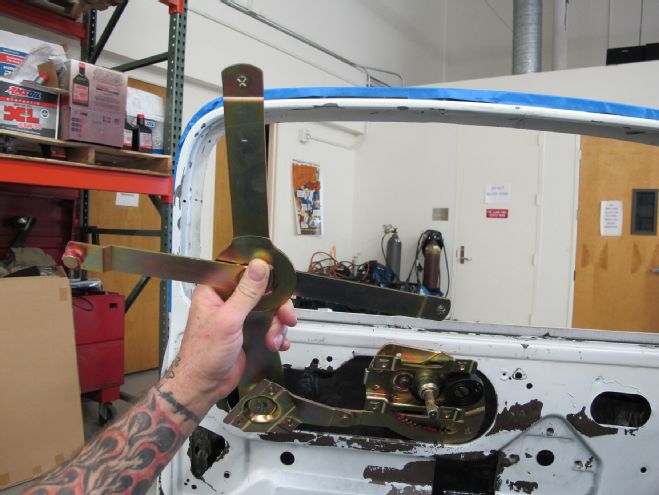
The stock internal door components were pretty rough when Jason initially disassembled his truck, so he'll be replacing both window regulators as well as the door relays and handles with new items from LMC Truck.
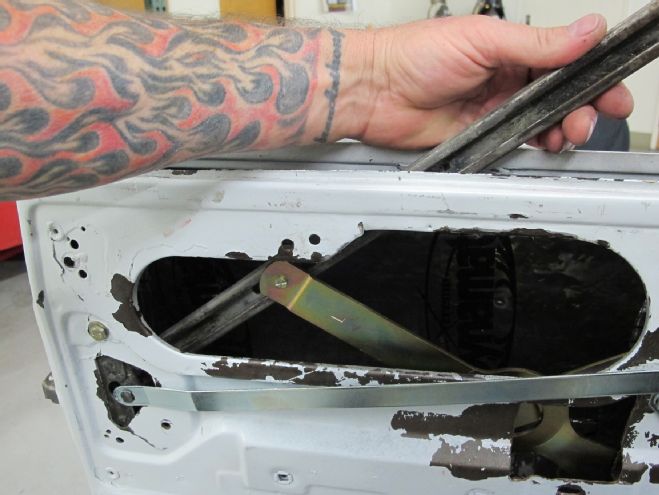
A bit of grease on the window regulator rollers as well as the main drive gear before installation will ensure smooth operation for years to come.
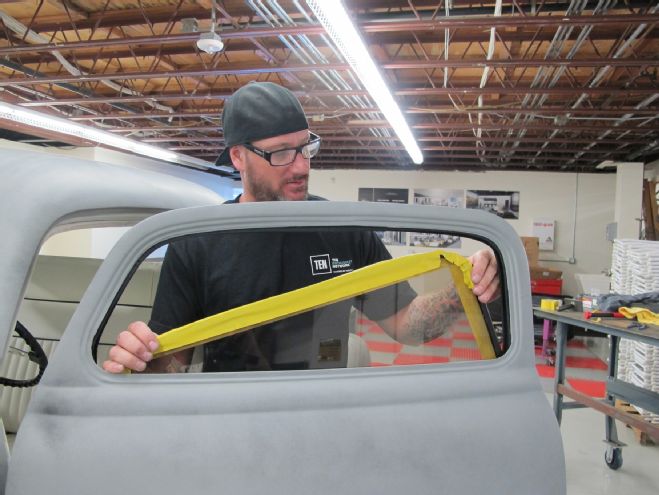
Once installed, the lower guide can be slid onto the window regulator's rollers.
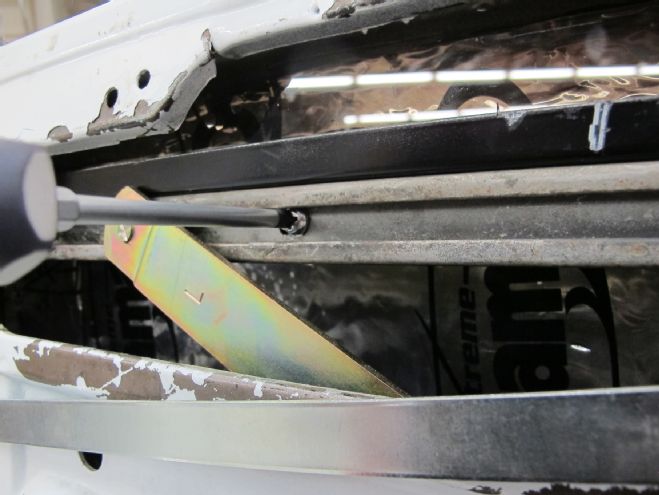
With everything in place, the side glass assembly can then be installed into the door frame…
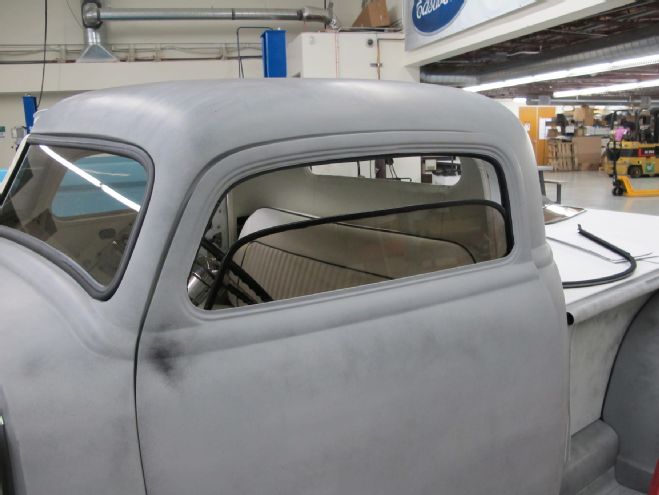
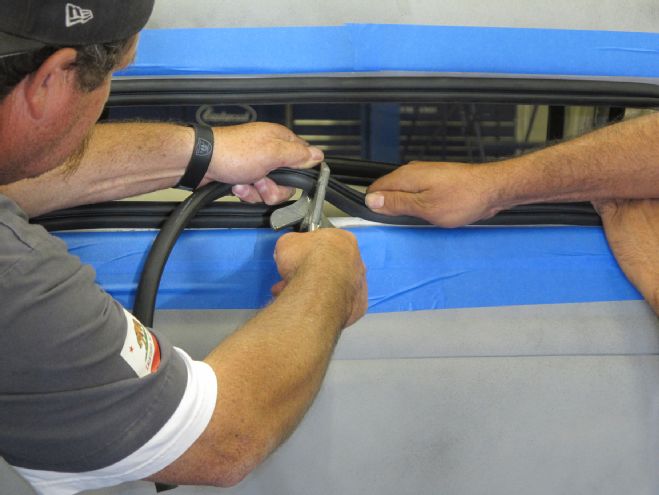
…and fastened to the regulator assembly.
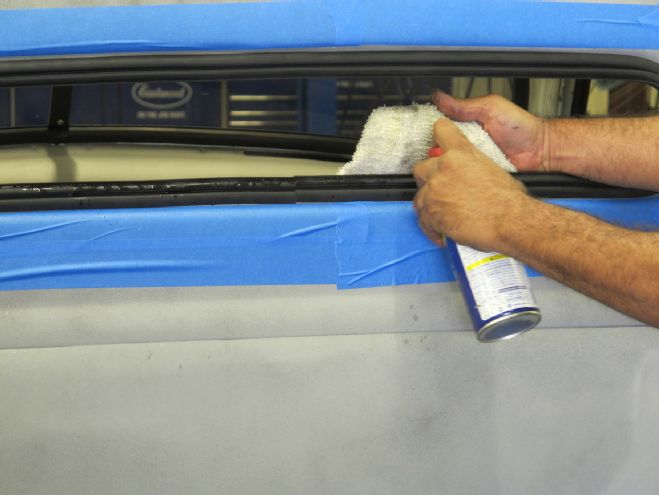
Onto the rear glass, this was probably the most difficult to install due to the relatively small nature of the window opening. Jason called in the reinforcements, Auto Tech Glass Services, to assist in getting the job done. Here, the stock LMC Truck gasket is cut to fit the opening.
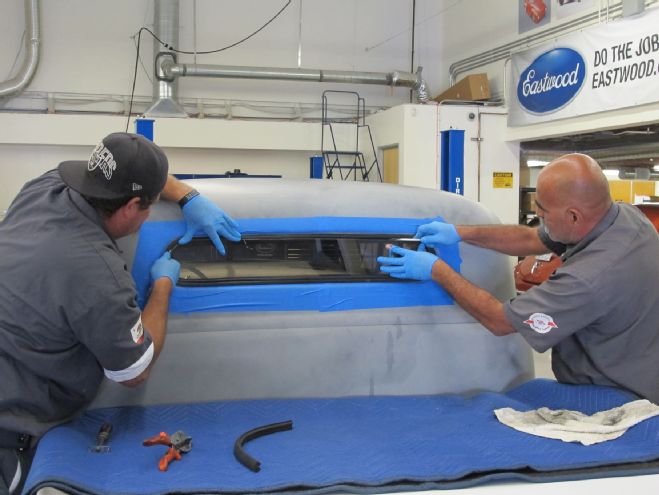
Once the gasket is fitted to the opening, the window channel is liberally lubricated with WD-40 to help the next step.
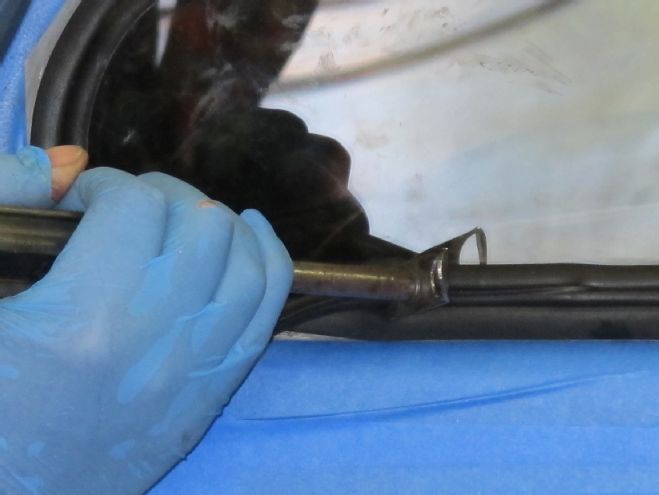
Using a nylon glass tool, the acrylic window is worked into the gasket until the whole pane is in place.
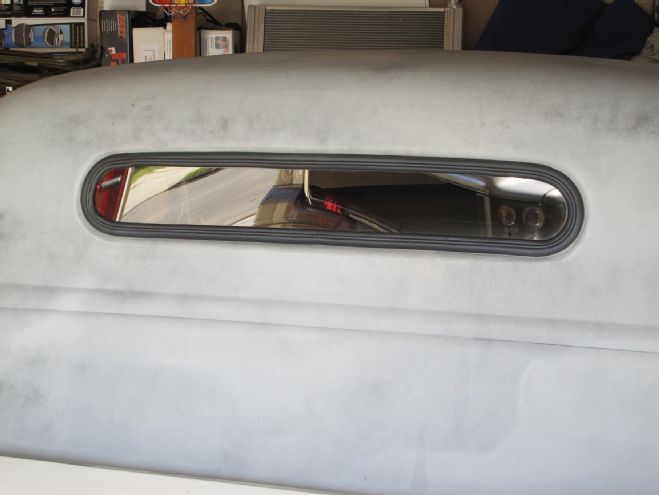
A special tool is then used to install the bead locking strip into the gasket assembly. This ensures that the rear window sits nice and snug in its new home.
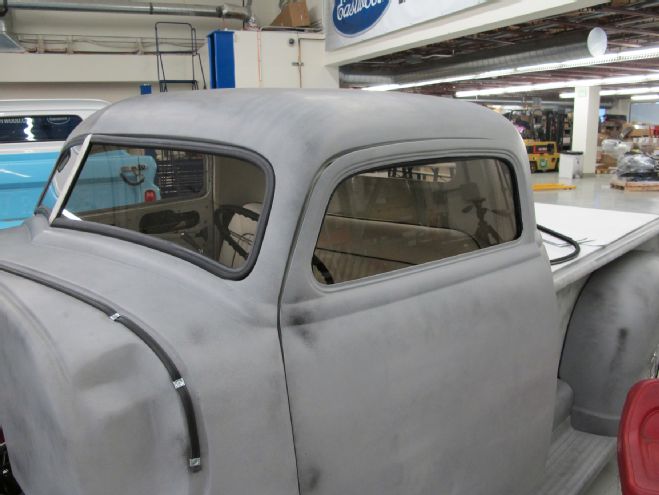
The finished product speaks for itself. A custom AMHRG acrylic treatment for a chopped Chevy that will outlast and outperform its silicate counterpart.